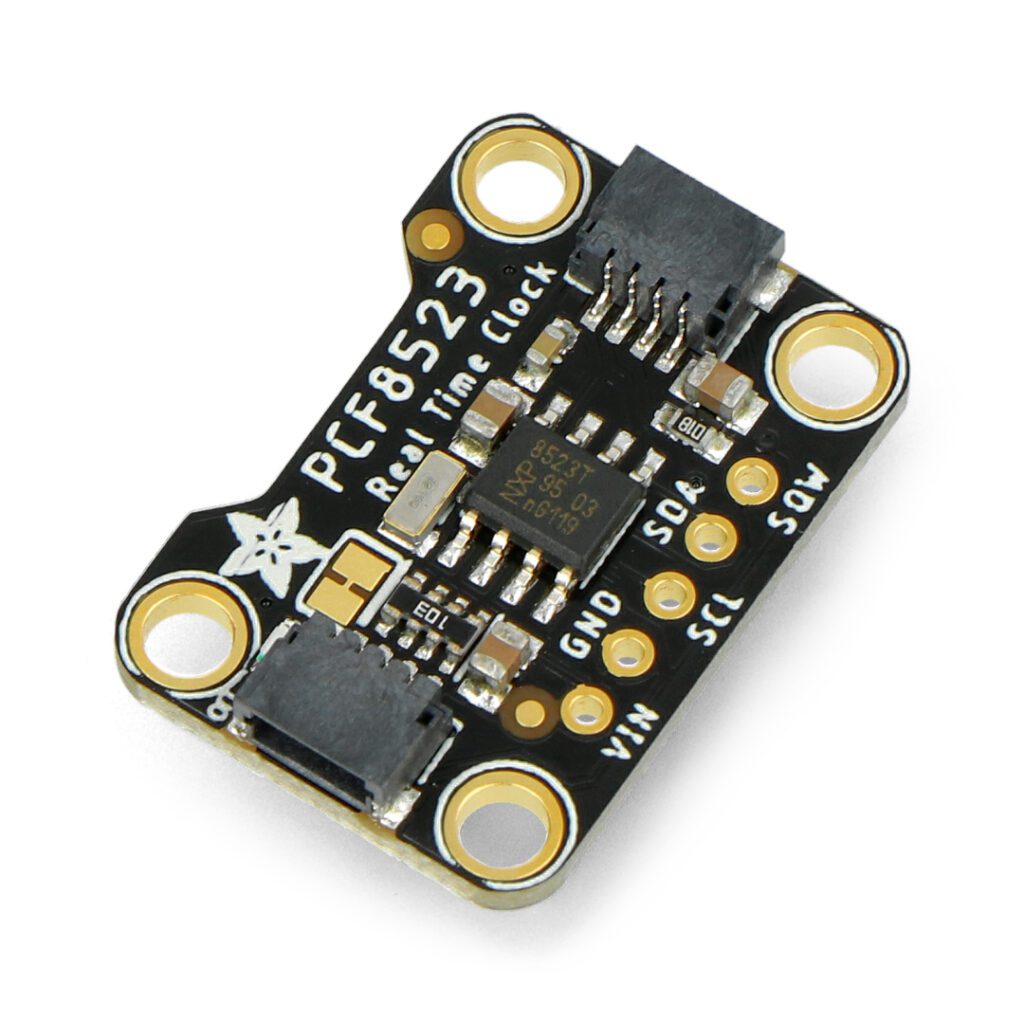Table of Contents:
In microcontroller-related projects, especially with the popular Arduino platform, it often becomes necessary to use an RTC module, or real-time clock.
This is a component that plays a key role in maintaining accurate time in many electronic devices and systems.
You encounter it every day, even if you don’t notice it.
Check out what exactly characterizes the Arduino RTC, how it works and where you can successfully use such a solution.
What is the RTC in Arduino?
The RTC, or Real Time Clock, is an extremely important component in the entire Arduino ecosystem.
In a nutshell, it’s an electronic circuit, based on a built-in quartz generator, that allows precise measurement of time – seconds, minutes, hours, days, months and years.
In the context of the Arduino platform, which is a popular tool for prototyping electronics, loss of power usually equals loss of data.
RTC in this case plays a very important role – unlike ordinary clocks, thanks to the use of battery backup power, it is able to keep the current time even after the device is cut off from other sources of energy.
This, in turn, allows regular operation of the equipment.
You can easily integrate popular RTC modules such as DS3231 or DS1307 into the Arduino platform, which will enable you to use accurate timestamps in your projects.
How does the RTC module work in Arduino?
Real-time clocks play a key role in maintaining accurate time and date, even when the main power supply is lost.
An essential element in an RTC module, therefore, is the use of backup power, often in the form of a small lithium battery or a small rechargeable battery.
In back-up mode, current consumption must be minimal so that the supplied power lasts for an extended period – some modules are able to operate on a single battery for many years.
RTCs are key components in a range of electronic devices, where often such modules are already built-in as integral peripherals.
However, for simpler microcontrollers, such as Arduino boards, RTC modules become an indispensable addition.
A variety of solutions are available, from small, low-cost modules in the form of boards attached via goldpins, to dedicated shields.
Despite their many functions, a distinctive feature of Arduino RTC modules is their small size (determined by the size of the battery), which makes them ideal for use in space-constrained areas – a perfect example is the Tiny RTC, which has a compact size of 28×28 mm.
How can the Arduino's RTC be used?
You already know that RTC modules in projects based on the Arduino platform enable precise time tracking, even when power is lost.
Their versatile applications make them extremely popular in a variety of solutions, among which are:
1. electronic clocks
Arduino RTC modules are commonly used to build various types of electronic clocks.
With accurate timekeeping, you can enjoy not only precise time indication, but also the date, or additional functions such as alarms or moon phase display.
2. data monitoring and logging systems
In projects that require accurate time correlation with data, Arduino RTC modules are sometimes indispensable.
For example, in monitoring systems for temperature, humidity or other environmental data, RTCs allow you to assign an accurate timestamp to each data sample.
This, in turn, makes it easier to analyze and interpret the collected information.
3. automatic irrigation systems
Do you have your own garden and want to design an automatic plant watering system for it?
RTC Arduino will be a great choice.
It will allow you to set a precise watering time schedule.
Integration of the timer with the minicomputer will allow you to take into account the time of day, days of the week or even weather conditions in optimizing the irrigation system.
4 Security systems
In security systems such as surveillance cameras, RTC modules can be used to accurately date and record events.
This enables effective analysis and identification of potential threats.
5. lighting control
The Arduino’s RTC can also be used in lighting control projects, especially in lighting systems that are automated according to the time of day.
You can program the Arduino to turn lights on and off according to a set time schedule.
How to use RTC in Arduino projects?
The RTC module is usually connected to the Arduino via a communication interface, such as I2C or SPI.
It is then necessary to initiate communication between the minicomputer and the module.
There are many libraries available for Arduino that facilitate the use of RTC modules, such as the DS3231 library, which supports the popular DS3231 real-time clock module.
After establishing communication with the RTC, you can set the current time and date.
This data will be retained even when the power is turned off.
The Arduino can regularly read the time from the RTC and use it for various tasks in the project, such as displaying the time on the LCD or performing specific actions at specific times of the day.
How useful was this post?
Click on a star to rate it!
Average rating 0 / 5. Vote count: 0
No votes so far! Be the first to rate this post.




















